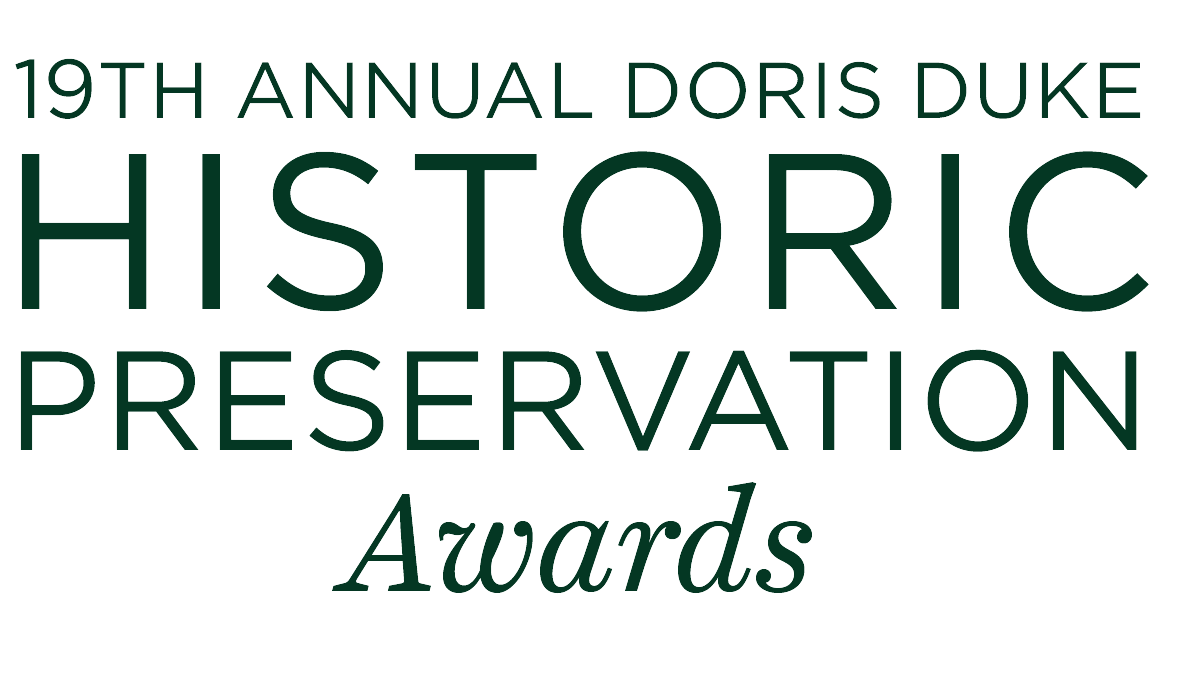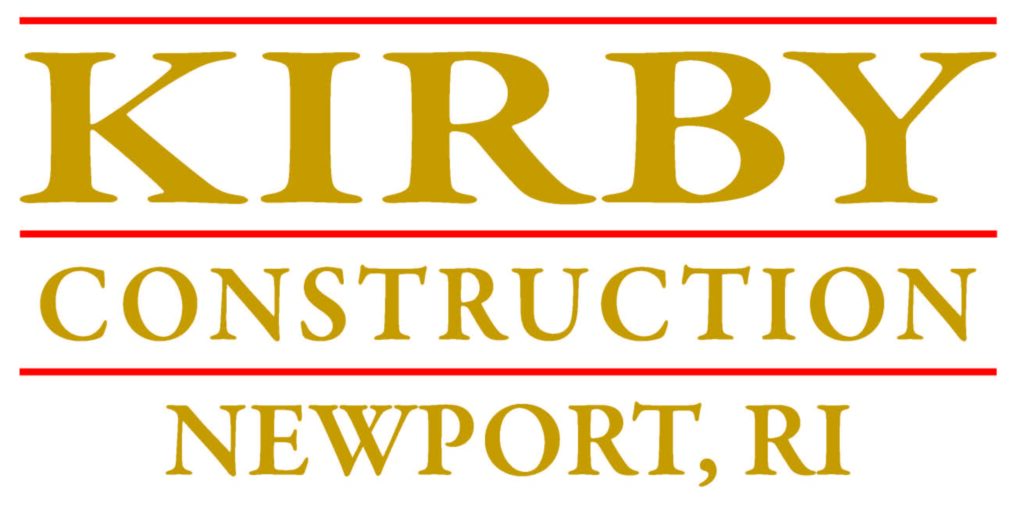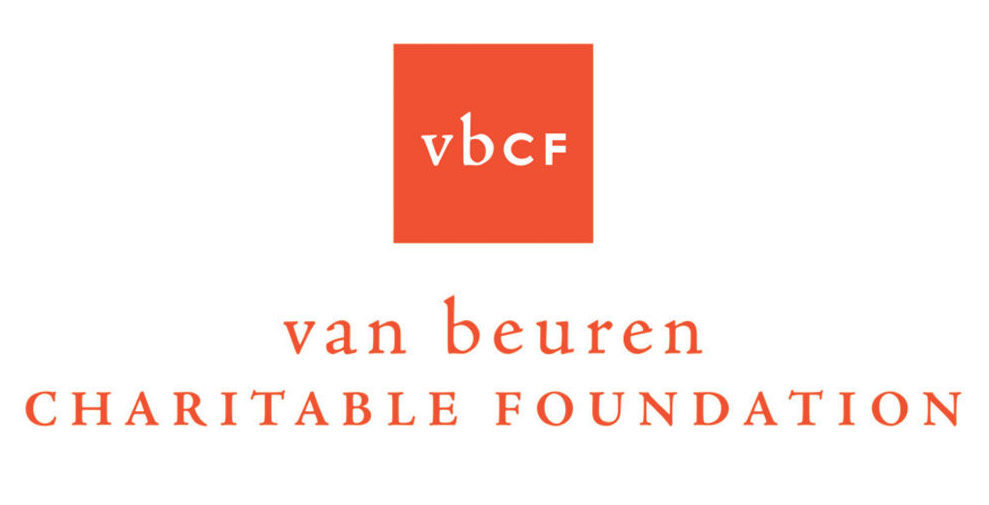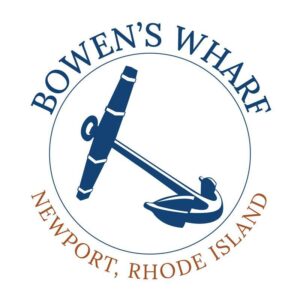Celebrating the
preservation community
The 2025 Doris Duke Historic Preservation Awards encourage excellence in historic preservation by recognizing exemplary projects that carry forward the legacy of Doris Duke and have had a significant impact on the preservation of the cultural and historic fabric of Newport, Jamestown, Middletown, and Portsmouth.
The Doris Duke Historic Preservation Awards are a collaboration of the Newport Restoration Foundation and the City of Newport. Award winners are recognized at the Doris Duke Historic Preservation Awards ceremony, a signature celebration that takes place on Friday, September 5, 2025, at Rough Point in Newport.
Nominations are now open!

2024 Awardees
Belmont Chapel (c. 1887), Newport, RI – Awarded to the Belmont Chapel Foundation for the detailed restoration of Belmont Chapel, a ca.1887 George Champlin Mason-designed funeral chapel in Island Cemetery. The project not only saved the building from possible demolition, but also reactivated the surrounding cemetery by providing a space to host burial services, lectures, and events.
Watson Farm (ca. 1796), Jamestown, RI – Awarded to Historic New England for the effort to preserve historic farm structures and mitigate severe storm water drainage problems at Watson Farm in Jamestown, RI. By preparing the site and its structures to withstand increasingly intense and frequent precipitation events, Historic New England mitigated significant threats to surviving historic fabric and demonstrated how to thoughtfully and effectively balance preservation priorities with the realities of climate change.
Hilltop (ca. 1871), Newport, RI – Awarded to John and Margherita Marshall for exemplary millwork restoration best practices completed by local tradespeople at Hilltop, the ca. 1871 Richard Morris Hunt and ca. 1895 William Ralph Emerson expanded house in Newport. The project highlights quality artisanship and skill as well as the need for continued investment in perpetuating the historic trades.
The Calvert, formerly the Cranston-Calvert School, Newport (ca. 1876), Newport, RI – Awarded to BCM Realty for the adaptive use of The Calvert, the former Cranston-Calvert School, to provide sought-after workforce housing. With citywide costs to rent increasing and multi-family housing options not keeping pace with demand, this creative conversion of a large vacant property preserved both the residential scale and met the community housing need of the Broadway neighborhood.
Thank you to our 2024 Sponsors
Presenting
Leadership
Anonymous
Anonymous
Gold

Anne and Matt Hamilton
George and Susan Petrovas
Lisa Whisler
Bronze
Dr. M. Therese Antone, RSM
Dr. Holly Bannister & Douglas Newhouse
Dan and Kerry Dwyer
Charlie and Patty Hayes
C. Hugh Hildesley, MBE
Stefani Hulitar
Torre and Patricia Peterson
Diana Pearson Scheetz
Sponsorship
The Doris Duke Historic Preservation Awards help sustain NRF’s work supporting our local communities through preservation initiatives that address the impact of climate change on architectural and cultural heritage, make intangible cultural heritage accessible through more expansive storytelling, and invest in the historic preservation trades and preservation skills-building.
Sponsorship opportunities are available for individuals and organizations to lend support to this event, which is NRF’s largest annual fundraiser. Each level of support includes exclusive opportunities and perks like event tickets with VIP access, special recognition, and more. For more information, please contact Sue Battle, Development & Donor Relations Manager.
If you are unable to attend but would like to support NRF, consider lending your support with a donation.
Past Award Recipients
2023
Newport Tree Conservancy, Newport, RI
Awarded to the Newport Tree Conservancy for the Heritage Tree Center, a community resource to study, protect, and propagate Rhode Island’s most unique, historic, and at-risk heritage trees. The Center is preserving and propagating the genetic lines of historic trees statewide for public and private planting. It also engages Newport students to expand the community’s involvement in the horticultural process.
Newport Historic Cemetery Advisory Commission, Newport, RI
Awarded to the Newport Historic Cemetery Advisory Commission (HCAC), a nine-member volunteer appointed commission to assist the city in efforts to preserve, protect and promote Newport’s historic burying grounds. The HCAC’s recent work has focused on improving site access, expanding funding, repairing headstones, and increasing educational content for the City’s eight burial grounds that serve as important historic public spaces.
The Captain William Finch House (c. 1770), 78 Washington Street, Newport, RI
Awarded to Dave and Jenay Evans for the exterior and interior restoration of their 18th – century home. The project fully restored the building from a state of structural disrepair and transformed it into a vibrant home. The project carefully retained the building’s original craftsmanship and detailing while updating the property to code.
The Sailing Museum, 365 Thames Street, Newport, RI
Awarded to the Sailing Museum for the adaptive use of the historic Newport Armory (1894). The project, undertaken in collaboration with the City of Newport and contractor Kirby Perkins, transformed the Armory into a multi – use public and private space in the heart of Thames Street. The project included timely exterior repairs to preserve the building while updating the interior to be a welcoming public space.
2022
Christopher Townsend House (1725), Bridge Street, Newport, RI
Awarded to Karen Weber and Andy Segal for the exterior restoration and elevation of their home. The building was the first to follow the City of Newport’s guidelines for elevating historic buildings in the face of rising sea levels. This property sits at the lowest point in the historic Point neighborhood and has a history of flooding. Hurricane Sandy, storm water runoff, and high tides all caused significant flooding of the basement and first floor.
Midcliff (1886), Ruggles Avenue, Newport, RI
Awarded to Kirby Perkins Construction and Susan and George Petrovas for the exterior restoration of their Queen Anne Victorian-style home – Midcliff – originally designed by Peabody & Stearns. The project included the replacement of the failed modern roofing, flashings, chimney restorations, removal of multiple lead-based paint layers, and replication of original trim and siding details.
Rise to Redemption Walking Tours, Sankofa Community Connection, Newport, RI
Awarded to Niko Merritt for the development of an interactive walking tour that offers a look into the lives of Newport’s community of African heritage in the 18th century. The tour was developed in 2016 in response to the Black community’s lack of representation in Newport’s history. The tour goes beyond the typically discussed topics of enslavement and the European slave trade to humanize African heritage and clear up historical inaccuracies. The tour focuses on two individuals, Duchess and John Quamino, who fought for their freedom and became influential members of Newport society and highlights individuals who fought for the education and freedom of the Black community.
Serpentine Path, Ochre Point Avenue, Newport, RI
Awarded to The Preservation Society of Newport County for the landscape rehabilitation at The Breakers. The project expanded public access to the grounds and created a 1,500-foot-long path around the property from the Shepard Avenue gate on the north side to the Cliff Walk in the southeast corner. The path is part of a multi-phase plan to restore The Breakers’ 13-acre grounds.
Trevett School (1809), Third Street, Newport, RI
Awarded to Michael Terra for the exterior restoration and belfry reconstruction. The school was originally built by Eleazer Trevett on Barney Street, before being moved to Cherry Street, and finally to Third Street. The belfry was intact for the moves from Barney and Cherry Streets. However, the foundation had deteriorated significantly, requiring the building to be raised for foundation repairs. Significant care was taken to replicate the original belfry and preserve the original character of the school.
2021
Awarded to Mr. Hendrik and Mrs. Siobhan Kits van Heyningen for their exterior restoration of the late-19th century Shingle Style/Queen Anne house in the Kay-Catherine-Old Beach National Register Historic District. The 1882 house was originally designed by Newport architect, Dudley Newton. The home had been in the Kits van Heyningen family since the mid-1960s, but had fallen into disrepair for years after being abandoned following the passing of Hendrik’s grandparents. The Kits van Heyningens took on the home, and researched and reproduced the character-defining details that have now restored the house to a presentation closely matching its original. Highlights of the project included restoring the second-floor balcony on the front elevation (extended in the 1970s) back to its original size, matching custom mahogany trim to replace rotted and damaged pieces, and recreating missing balusters, railings, and corbels on the porch to match their original design. Single pane, historic-replica sashes for four windows were also fabricated to recreate the original 30-over-1 style. After extensive work and care, this restoration contributes to the preservation of the Kay-Catherine-Old Beach historic district and its late-19th century architecture for many more generations to enjoy.
St. John’s Masonry Preservation (1894), Newport, RI
Awarded to Father Nathan Humphrey; recognized for the preservation of a historic church located in the Point Neighborhood. The structure was originally built in 1894, when Sarah Titus Zabriskie heard of a young church founded by Peter Quire, an African American, named St. John’s that was in financial straits. Zabriskie donated $100,000 toward the building of the Zabriskie Memorial Church for St. John’s in memory of her late mother, Sarah Jane Zabriskie. The interior wall surfaces at St. John’s Church were damaged from decades of water intrusion. In 2019, the root causes of the deterioration, leaking roofs and gutters, were addressed with a roof repair utilizing both historic and new roof tiles, snow guards, gutters, and flashing. However, the next area of concern was the masonry walls, which were deteriorating, especially at the mortar joints. A repointing process removed and replaced deteriorated mortar, restoring the visual and physical integrity of the masonry. From the color and texture of mortar to the tools used in the repair, the masonry work is both physically and visually appropriate. Through their steadfast commitment to honoring the history of the building, St. John’s continues to carry on the legacies of Peter Quire and Sarah Titus Zabriskie’s to this day.
2020
Awarded to BankNewport; recognized for the rehabilitation of a 90-year-old bank in Newport’s Washington Square. The structure was built between 1929 and 1930 and was designed with the intent to blend in seamlessly with its neighbors and the character of the square. When the building was recently evaluated for a new HVAC system, it was decided that the entire space should be rehabilitated. BankNewport determined that maintaining the branch’s historical integrity while balancing modern amenities was of the utmost importance. Highlights of the rehabilitation included mechanical and electrical updates, HVAC system replacement, exterior masonry restoration, and recreations of some of the building’s original artistry by local artisans such as hand-painted gold-leaf lettering on the exterior, ornate interior ceiling details, and the lobby’s decorative plaster. They also made several technical updates to enhance the banking and ATM experience. Ultimately, the building was carefully rehabilitated and restored in order to continue serving the exact purpose it was built for decades ago – as a community bank.
Edgar House “Sunnyside” (1885), Newport, RI
Awarded to Susan and Peter Metzger; recognized for rehabilitating and restoring an early example of brick colonial revival architecture. The house was built by the renowned architectural firm of McKim, Mead, & White between the years 1884 and 1886. In 2018, the house was purchased by Susan and Peter Metzger as a two-family home in need of preservation. Exterior restorations included repairing 20 wood columns, masonry, steps, and walkways. The 13 third floor dormers were all repaired and the roof was replaced. Inside, systems were upgraded, bathrooms were renovated, and a large-scale ceiling mural was also restored. In addition, the house was painted and the wood was refinished. After extensive work, Sunnyside is once again a stately one-family home.
International Tennis Hall of Fame: Frieze Restoration (1879-81), Newport, RI
Awarded to the International Tennis Hall of Fame (ITHOF); recognized for the restoration of a lost portion of historic fabric unique to the Newport Casino located on Bellevue Avenue. ITHOF is dedicated to the preservation and stewardship of the Newport Casino, which is where the museum resides. During the 20th century, the Newport Casino’s decorative “frieze,” or a horizontal board of sculpted or painted decoration, was replaced. Fortunately, many of the original frieze medallions were salvaged and stored at the museum. Due to their significant level of deterioration, the original medallions were not able to be reinstalled. Instead, 38 new circular and semicircular ornate medallions were hand carved to match the original size, motif, and carving techniques using historic photos and drawings. This project not only restored the historic frieze, it restored a portion of Newport’s past for all who pass through Newport’s downtown.
2019
Owned by Linda and Rocky Kempenaar; recognized for the rehabilitation of a nineteenth-century utilitarian out-building. The building was originally constructed in 1887 as a horse barn to support the larger Wild Moor Estate. Until its purchase by the Kempenaars in 2016, the property had been used as storage space and had never been fully utilized as a modern, residential structure. Highlights of the rehabilitation included upgrading mechanical systems to meet modern building codes and restoring historic windows, doors, radiators, and woodwork throughout the house. The Kempenaars’ goal for the rehabilitation was to demonstrate the adaptive reuse potential of utilitarian buildings and bring light to the network of outbuildings associated with historic Newport estates.
Restmere (1857) Middletown, RI
Awarded to Cheryl Hackett and John Grosvenor; recognized for rehabilitating a 10,000 square-foot dilapidated mansion originally designed by noted architect Richard Upjohn in 1857 for Alexander Van Rensselaer. The homeowners designed a rehabilitation plan that qualified for federal historic tax credits and, in so doing, preserved the building’s architectural integrity, documented the site’s history, and ensured the house would be economically sustainable for future stewards. Exterior restoration included painting, roof replacement, and historic wood window restoration. Interior restoration included repairing original cracked plaster walls and water-damaged ceilings, refinishing hardwood flooring, rebuilding fireplace hearths, and upgrading systems. Today, Restmere stands as an example of Richard Upjohn’s Italianate resort-style vernacular and is home to over 160 years of Rhode Island’s architectural, social, military, music, and Civil Rights history.
St. Columba’s Lych Gate (1897), Vaucluse Avenue, Middletown, RI
Awarded to St. Columba’s Chapel; recognized for restoring a rare American lych gate, a feature which traditionally serves as the entrance to an English churchyard. St. Columba’s timber framed lych gate was designed by prominent Gothic Revival architect Henry Vaughan, supervising architect of the Washington National Cathedral. Recently it was discovered that extensive damage by insects and other animals had affected both the appearance and the structural integrity of the Chapel’s iconic gate. The restoration work included in-kind replacement of the gate’s sculpted sill beams and roof shingles as well as leveling the stone floor and staining the entire structure. With its completion this past May, the project increases the beauty of St. Columba’s campus, served as the impetus for a Historic Preservation Trust campaign, and grants future generations the ability to enjoy St. Columba’s just as Newport residents in their carriages did one hundred years ago.
Vinland Ironwork (1880), Ochre Point Avenue, Newport, RI
Awarded to Salve Regina University; recognized for the restoration of the University’s cast- and wrought-iron fencing along Shepard and Ochre Point Avenues. The fencing was originally part of the Vinland Estate built by Peabody & Stearns in 1881-83, which was then gifted to the University in 1955. The project included foundry replication and casting of fence posts, panels, and piping that were damaged beyond repair as well as the return of fencing that had previously been removed from the original site. Protective measures, such as the installation of new curb stops along Shepard Avenue, were also taken to ensure the continued preservation of the historic fencing. The project was supported by a grant from the Alletta Morris McBean Charitable Trust, and now allows the fence to continue to be a focal point for students, faculty, and staff as they move about campus as well as visitors who regularly stroll along Ochre Point Avenue.
2018
















